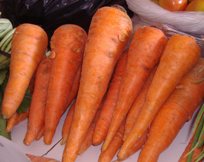textile dyes can also be called a dye (in the broad sense), the color is a certain spectrum that exist in a perfect white light, and food color in general have a liquid form and also there are some important aspects in coloring and a variety of substances that would also used is acid, sulfur, vat and dispersed in the year "1876 Witt stated that the dye molecule is a combination of organic substances that are not saturated, chromophore as a carrier substance and auksokrom color, as color binder with fiber"
Textile Dyes
Basically, textile dyes are commonly used to dye cloth, and textile dyes there are 2 kinds of natural and artificial coloring, but I will not explain them because too long so I will explain the natural dyes and dye patches were made.At the beginning have been using natural coloring, but because of his age and technology advances very rapidly and developed the natural coloration of this began to be forgotten and textile dye companies assume that artificial coloring is more practical and economical, easy to obtain artificial color and the color was more than dye natural will but of natural dyes can not be forgotten by the company was still wearing batik material of natural dyes, and therefore give an award to the efforts of Indonesian batikThen the natural pigments anything if that can be used to dye cloth is batik? Natural dyes for textile materials in general can be obtained from the extracts of various plants such as roots, wood, leaves and seeds, batik artisans have known a lot of plants to create colors that will be made in textile coloration, some of which they know of them is a tree leaf indigo , high soga bark, wood tegeran, turmeric, the roots of Morinda citrifolia, and kesumba jambal soga leather, textile fabrics and they color with natural dyes are materials derived from natural fibers such as silk from the silkworm, wool from sheep wool and cotton of trees, and made of materials of artificial fibers such as polyester, nylon and others have no affinity or attraction of natural dyes so that the ingredients are difficult colored with natural dyes. Material from silk in the most effective generally have good power against natural dyes compared with material from cottonAnd barriers that often they occur naturally and frequently is the availability of a variety of existing, and the material was not ready so we need a process to be used as textile dye solution desired by the craftsmen of batik. Therefore, natural dyes are considered less effective. But these natural dyes will not be a barrier to being the best, just behind the shortage would have an advantage that can penetrate the world market and is considered the largest commodity INDONESIA superior product that has uniqueness, creativity, ethnic, and exclusive, and to raise again the quality of natural dyes Indonesia needs to develop the natural pigments to explore the sources of natural dyes from the potential of Indonesia's natural resources are abundant. Exploration is intended to obtain qualitative color produced by various plants around us for dyeing tekstil.dengan so we can reproduce the type, exploration of natural dyes can be started by selecting various types of plants that are around us both from the leaves, flowers , stems, bark or root
so the conclusion that we should not forget the natural dyes natural dyes because it is inherited from our ancestors and should be preserved
now i will explaind about sintetic colored..
anorganic artificial or can be called sintetic is either man-made dyes and semi sintetic sintetic that its coloration resembles the original, and that of the so-called pigment and mineral discovered by William Henry Perkin in 1856 since then, various types of synthetic dyes successfully synthesized. Artificial coloring is often used by leading companies like making clothes and jeans, big perusaahaan use artificial dyes, textile dyes and stutter more practical than the natural dyes
Various kinds of substances used in textile coloration there are 6 of Disperse, direct, reactive, vat, acid, sulfur or indigo.Disperse dyes are the substance is a concentration of dyes in liquid form and made for a variety of applications and have the ability to adjust to different systems generally use for paints, coatings, paper, rubber, latex, ink, crayons, etc., and such as direct, reative, vat, acid and sulfur was only to celluloseNatural or artificial coloring in general not just fabric, but can also be given to, food samples in food coloring that is traditional snacks such as cake, bread, cakes, wafers, etc., Food coloring can be a kind of direct dyes, Mordants and vat, and this material is being watched closely by law, food coloring is classified as a food additive that is produced with high standards-not like the coloring for the industry.And staining an important addition to the above is the oxidation bases are usually used for fur and hair, leather dyes to materials which are made of leather, lightening his usual florenses for textile fibers and paperDyes karbin, a newly developed staining method to color the various types of substrates, acid, sulfur and reactive to cellulose alone is



